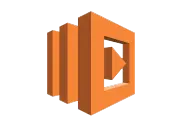Our Alumni Work at Top Companies





React JS Course Curriculum
It stretches your mind, think better and create even better.
Topics:
1. What is an Application?
2. Types of Applications
3. Web Application Fundamentals
4. Web Technologies: (List key technologies and their roles)
Frontend: HTML, CSS, JavaScript, React
Backend: Python, Java, Node.js
Databases: SQL(MySQL, PostgreSQL), NoSQL(MongoDB).
5. Software Development Life Cycle (SDLC)
Phases: Planning, Analysis, Design, Implementation (Coding), Testing,Deployment, Maintenance.
6. Application Development Methodologies
Agile: Core principles, Scrum, Kanban
Waterfall
Topics:
1. What is Data?
2. Types of Data
3. Data Storage
4. Data Analysis
5. Data Engineering
6. Data Science
Topics:
The Importance of Computing Power
Key Computing Technologies
CPU (Central Processing Unit)
GPU (Graphics Processing Unit)
Cloud Computing
What is the Cloud?
Cloud Service Models: IaaS (Infrastructure as a Service), PaaS (Platform as a Service), SaaS (Software as a Service)
Topics:
1. What is Artificial Intelligence (AI)?
2. How AI Works?
3. Key Concepts
Machine Learning (ML)
Deep Learning (DL)
4. Key Concepts
What is Generative AI?
Examples: Large Language Models (LLMs), image generation models.
5. AI in Everyday Learning
Topics:
1. Customer Relationship Management (CRM)
2. Human Resource Management Systems (HRMS)
3. Retail & E-Commerce
4. Healthcare
Introduction to HTML
Topics:
1. Basics of HTML
The evolution and role of HTML in web development.
Understanding HTML syntax and the structure of documents.
2. Core HTML Elements
Detailed look at paragraphs, headings, links, images, and their attributes.
3. Structuring Web Content
Using lists and tables for data presentation.
The significance of semantic HTML for accessibility.
Enhancing Web Pages with Forms and Multimedia
Topics:
1. Interactive Forms
Crafting forms for data collection with a variety of input types.
Basics of form validation and ensuring accessible form design.
2. Embedding Multimedia
Incorporating audio and video elements.
Embedding external resources with <iframe> and other tags.
Advanced HTML Features
Topics:
1. Modern HTML Elements
Exploring semantic elements like <article> , <section> , and <nav> .
2. Dynamic HTML with APIs
A brief overview of HTML5 APIs enhancing interactivity and web functionality.
3. Reusable Web Components
Introduction to HTML templates, custom elements, and shadow DOM.
Topics: Accessibility and HTML Best Practices
Topics:
1. Enhancing Web Accessibility
Utilizing ARIA roles and proper HTML structure to support all users.
2. Maintaining HTML Standards
Importance of validating HTML code and adhering to web standards for cross-browser compatibility.
Topics: Performance, Security, and Staying Current
Topics:
1. Optimizing Performance
Techniques for optimizing web page loading times, such as image optimization and lazy loading.
2. Web Security Fundamentals
Best practices for embedding content and managing user-generated content to prevent common security vulnerabilities.
3. Keeping Up with HTML Evolution
Resources and strategies for staying updated with HTML developments and future trends.
Topics:
1. Foundations of CSS
History and evolution of CSS.
How CSS works with HTML to style webpages.
The role of the CSSOM (CSS Object Model) in web rendering.
Overview of CSS specifications and how to read the CSS documentation.
2. Applying CSS Styles
Comparison of External, Internal, and Inline Styles: Use cases and best practices.
Linking stylesheets and understanding the <style> tag.
The importance of CSS placement for performance and maintenance.
3. CSS Syntax
Detailed exploration of properties and values.
Writing well-structured CSS rules.
Understanding the universal selector (*) and its use cases.
Comments in CSS: Syntax and best practices for documentation.
4. Selectors and Combinators
Types of selectors: Class, ID, Attribute, Pseudo-class, and Pseudo-element selectors.
Combinators: Descendant, Child, Adjacent Sibling, and General Sibling.
Practical exercises: Using selectors to style complex layouts.
Topics:
1. Understanding the Box Model
In-depth look at content, padding, border, and margin.
Box-sizing: border-box vs. content-box.
Visualizing the box model with browser developer tools.
2. Typography and Text Styling
Font families, web-safe fonts, and @font-face rule.
Text styling properties: weight, style, spacing, shadow.
Web typography best practices for readability and accessibility.
3. Units, Values, and Colors
Absolute vs. Relative units: When and why to use each.
Color models in CSS: RGB, RGBA, HSL, HSLA, and Hexadecimal.
Implementing custom properties (CSS Variables) for theme management.
4. Specificity, Inheritance, and the Cascade
How CSS determines which rules apply: Specificity hierarchy.
Writing well-structured CSS rules.
The role of the cascade in resolving style conflicts.
Strategies to organize and structure CSS to minimize specificity conflicts.
Topics:
1. Visual Effects
Implementing box-shadow and text-shadow for depth and visual interest.
Using border-radius for rounded corners.
Gradient backgrounds: Linear and radial gradients.
2. Background Techniques
Complex background images and patterns.
Controlling background size, position, and repetition.
Multi-layer backgrounds and their use cases.
3. Advanced Border and Outline Styling
Border images for intricate border designs.
Styling and animating outlines as focus indicators.
4. Layout Control with Overflow and Margin Collapsing
Controlling content overflow: scroll, hidden, and auto.
Understanding when and why margin collapsing occurs.
Strategies to prevent unwanted margin collapsing.
Topics:
1. The Display Property
In-depth exploration of block, inline, inline-block, none, and table.
Newer display values: flex, grid, and contents.
2. CSS Positioning Techniques
Detailed scenarios for using each positioning value.
Creating sticky headers and footers.
Overlaying content with absolute positioning.
3. Floating Elements and Clearing Floats
The role of floats in CSS layout history.
Techniques for clearing floats: clearfix hack and overflow method.
When to use floats in modern CSS.
4. Handling Overflow
Techniques for managing content overflow in containers.
Design patterns for scrollable elements.
Topics:
1. Flexbox and Grid Layouts
Detailed guide to Flexbox: Properties for containers and items.
Grid Layout: Defining grid containers, grid items, and grid areas.
Use cases and practical examples: When to use Flexbox vs. Grid.
2. Responsive Design Techniques
Media Queries: Syntax and breakpoints.
Mobile-first vs. Desktop-first strategies.
Responsive images and videos: Techniques for adaptive media.
3. Animations and Transitions
Creating smooth transitions between states.
Keyframe animations: Building complex animations with @keyframes.
Performance considerations for CSS animations.
4. Advanced Responsive Design
Implementing responsive typography.
Strategies for accessible, responsive forms.
Advanced layout patterns: Masonry, column-drop, and
Getting Started with Bootstrap
Topics:
1. Introduction to Bootstrap
2. Setting Up Bootstrap
3. Using Bootstrap CDN
4. Basic Grid System
5. Containers, Rows, and Columns
Bootstrap Layouts and Responsiveness
Topics:
1. Responsive Classes
2. Typography and Utilities
3. Default Typography
4. Text Alignment and Display Classes
5. Spacing Utilities
Navigation and Components in Bootstrap
Topics:
1. Navigation
2. Navbar Dropdowns within Navbar
3. Alerts: Basic Alerts & Dismissible Alerts
4. Badges
5. Button Styles & Button Groups
Advanced Bootstrap Components
Topics:
1. Basic Card: Card Headers and Footers
2. Image Overlays in Cards
3. Form Controls, Form Groups, and Layout
4. Validation Feedback
5. Basic Modal Setup
6. Carousel with Indicators and Controls
Interactivity and Layout in Bootstrap
Topics:
1. Tooltips and Popovers
2. Flex Container and Items
3. Direction, Order, and Alignment in Flex
4. Visibility Classes
Core JavaScript Concepts
Topics:
1. Introduction to JavaScript
Variables, Data Types, Operators
2. Functions and Scope
Functions, Parameters, Return Statements
Function Expressions, Default Parameters, IIFE (Immediately Invoked Function Expressions)
JavaScript Functions and Scope, Anonymous Functions, Higher-Order Functions, Callback Functions, Arrow Functions, Closures
3. Control Structures and Data Handling
Hoisting, Control Structures, Conditional Statements, Loops
Arrays - Introduction and Methods, Object Methods, Spread/Rest Operators, Array and Object Destructuring
4. Strings, Dates, and Template Literals
String Methods, Date Methods, Template Literals
5. Object-Oriented Programming in JavaScript
Objects and Classes, Getters and Setters, Prototypes, Inheritance,Constructor Functions
Advanced JavaScript Features
Topics:
1. Deep Dive into Functions and Scope
Exploring further into Functions and Scope beyond the basics
2. Asynchronous JavaScript
Introduction To AJAX, Callbacks, Promises, Async/Await
3. Execution Context, Scope Chain, and Error Handling
Execution Context and Scope Chain, Error Handling (try...catch)
4. Modules and Regular Expressions
Modules and Import/Export, Introduction to Regular Expressions
5. Local Storage and Session Storage
Utilizing Web Storage APIs for storing data locally
Working with the Document Object Model (DOM)
Topics:
1. DOM Basics
DOM Tree, Nodes, Manipulation
2. Event Handling
Event Listeners & Event Delegation
3. Advanced DOM Manipulation
DOM Traversal, create Element, append Child, insert Before
Asynchronous Programming and APIs
Topics:
1. Asynchronous JavaScript Revisited
A comprehensive look into AJAX, Fetch API, Promises, and Async/Await
2. Working with APIs
Understanding Web APIs, Making HTTP requests using the Fetch API,Handling responses and working with JSON, Error handling with Fetch API
Modern JavaScript Development
Topics:
1. Advanced Function Usage
A deeper exploration of JavaScript's functional programming aspects
2. Error Handling and Regular Expressions
Advanced techniques for managing errors and utilizing regular expressions for data validation
3. JavaScript Modules
Leveraging modules for efficient code organization and reusability
4. Web Storage
Strategies for using Local Storage & Session Storage to enhance user experience
Introduction to TypeScript and its Fundamentals
Topics:
1. Understanding TypeScript
What is TypeScript?
Benefits of using TypeScript
Setting up the TypeScript environment
Introduction to the TypeScript Compiler
2. The Core Concepts
Variables in TypeScript
Basic and Complex Data Types
Type Inference and Type Compatibility
Diving Deeper into TypeScript Types
Topics:
1. Working with Enums
Enums and their uses
2. Advanced Typing Features
Advanced Types: Union, Intersection, Conditional Types
3. Iterating with TypeScript
Iterators and Generators
Object-Oriented Programming with TypeScript
Topics:
1. OOP Fundamentals in TypeScript
Introduction] to Object-Oriented Programming concepts
Classes and Objects
2. Inheritance and Polymorphism
Inheritance: Extending Classes
Polymorphism: Method Overriding
Leveraging Interfaces and Abstract Classes in TypeScript
Topics:
1. Interfaces: Blueprint of an Object
Understanding] Interfaces
Applying Interfaces to Classes
2. Abstract Classes
Abstract Classes and their application
Differentiating Interfaces from Abstract Classes
Code Organization with Modules and Namespaces
Topics:
1. Namespaces
Organizing code with Namespaces
2. Modules: The Building Blocks
Modules in TypeScript
Importing and Exporting Modules
Topics:
1. Getting Started with React
Introduction to React and its significance in modern web development.
Setting up a React development environment.
2. ES6 for React
Essential ES6 features for React development: Arrow Functions, Let and Const, Template Literals.
Advanced ES6 features: Destructuring, Spread/Rest Operators, ES6 Modules, Promises, Async/Await.
3. Functional Components and JSX
Understanding functional components and JSX syntax.
Benefits of functional components over class components.
Topics:
1. React Components and JSX Deep Dive
JSX syntax nuances, embedding expressions, and creating functional components.
2. State and Props in React
Managing component state with useState.
Understanding and using props for parent-child communication.
3. React Hooks for Component Lifecycle
Introduction to useEffect for side effects in functional components.
Topics:
1. Advanced Hooks and State Management
Exploring useContext, useReducer for global state management and performance optimizations with useCallback, useMemo.
2. Styling and Data Fetching
Approaches to styling: CSS Modules, Styled Components.
Fetching data from APIs using useEffect and Axios.
Topics:
1. React Components and JSX Deep Dive
Implementing single-page applications with React Router.
2. Form Handling in React
Strategies for building and managing forms efficiently.
3. Global State Management with Redux
Basics of Redux for global state management in large-scale applications.
Topics:
1. Optimizing React Applications
Techniques like code splitting, lazy loading with React Suspense.
2. Testing React Components
Unit testing strategies using Jest and React Testing Library.
3. React Best Practices
Code organization, performance optimization strategies, and maintaining coding standards.
Topics:
1. Cloud Computing Basics
Understanding cloud computing: Definitions, service models (IaaS, PaaS,SaaS), and deployment models (public, private, hybrid, multicloud).
2. Cloud Service Providers Overview
Introduction to major cloud platforms (e.g., AWS, Azure, Google Cloud),focusing on their core services relevant to developers.
3. Cloud-based Development Environments
Setting up and utilizing cloud-based IDEs and development tools to streamline development workflows.
4. Deploying Applications on the Cloud
Basic concepts of application deployment on the cloud, including containerization basics with Docker and initial orchestration concepts.
Topics:
1. Understanding DevOps
The philosophy, practices, and benefits of DevOps in modern software development, emphasizing collaboration, automation, and integration.
2. Version Control with Git
Deep dive into using Git for source code management, including best practices for branches, commits, merges, and pull requests.
3. Continuous Integration/Continuous Deployment (CI/CD)
Introduction to CI/CD pipelines, overview of tools ( GitHub Actions), and setting up basic pipelines for automated testing and deployment.
4. Monitoring and Feedback
Basics of application monitoring, log management, and utilizing feedback for continuous improvement.
Topics:
1. Containers and Docker
Introduction to containers, Docker fundamentals, creating Docker images,and container management basics.
2. Managing Application Infrastructure
Basic strategies for managing infrastructure as part of the application lifecycle, including introduction to infrastructure as code (IaC) principles.
Topics:
1. Scalable Application Design
Principles of designing scalable applications that can grow with user demand, focusing on microservices architecture and stateless application design.
2. Cloud-native Services for Developers
Leveraging cloud-native services (e.g., AWS Lambda, Azure Functions,Google Cloud Run) for building and deploying applications.
3. Databases in the Cloud
Overview of cloud database services (SQL and NoSQL) and integrating them into web applications.
4. Security Basics in Cloud and DevOps
Understanding security best practices in cloud environments and throughout the DevOps pipeline.
Topics:
1. Agile and Scrum Methodologies
Incorporating Agile and Scrum practices into team collaboration for efficient project management.
2. Code Review and Collaboration Tools
Utilizing code review processes and collaboration tools GitHub, to enhance code quality and team productivity.
3. Automation in Development
Exploring automation beyond CI/CD, including automated testing frameworks, database migrations, and environment setup.
4. DevOps Culture and Best Practices
Cultivating a DevOps culture within teams, embracing continuous learning,and adopting industry best practices for sustainable development.
Introduction to Generative AI
Topics:
1. What is Generative AI?
2. Key Applications:
Text (ChatGPT, Claude, LLaMA)
Images (DALL·E, MidJourney, Stable Diffusion)
Audio (Music Generation, Voice Cloning)
Code (GitHub Copilot, Cursor)
3. Evolution of GenAI:
Rule-Based → Deep Learning → Transformers
GANs vs. VAEs vs. LLMs
Topics:
1. Effective Prompt Design
Instruction-Based, Few-Shot, Zero-Shot
2. Advanced Techniques:
Chain-of-Thought (CoT) Prompting
Self-Consistency & Iterative Refinement
3. Hands-on:
Optimizing prompts for GPT-4, Claude, LLaMA
Transformer Architecture
Topics:
1. Why Transformers? (Limitations of RNNs/LSTMs)
2. Key Components:
Self-Attention & Multi-Head Attention
Encoder-Decoder (BERT vs. GPT)
3. Evolution:
BERT → GPT → T5 → Mixture of Experts
4. Large Language Models (LLMs)
5. Pre-training vs. Fine-tuning
6. Popular Architectures:
GPT-4, Claude, Gemini, LLaMA 3
BERT (Encoder-based) vs. T5 (Text-to-Text)
Introduction to AI Agents
Topics:
1. What are AI Agents?
2. vs. Traditional AI:
3. Applications:
AI Agent Frameworks
Topics:
1. CrewAI (Multi-Agent Collaboration):
2. n8n (Workflow Automation):
Designing AI Agents
Topics:
1. CrewAI + n8n:
Automating Business Workflows
2. Multi-Agent Systems:
Collaboration & Specialization
Real-World Applications
Topics:
1. Case Studies:
AI Customer Support Agents
TOOlS & PLATFORMS























Our Trending Courses
Our Trending Programs
IT Engineers who got Trained from Digital Edify




LEARNERS
BATCHES
YEARS
SUPPORT
100000+ uplifted through our hybrid classroom & online training, enriched by real-time projects and job support.
Come and chat with us about your goals over a cup of coffee.
2nd Floor, Hitech City Rd, Above Domino's, opp. Cyber Towers, Jai Hind Enclave, Hyderabad, Telangana.
3rd Floor, Site No 1&2 Saroj Square, Whitefield Main Road, Munnekollal Village Post, Marathahalli, Bengaluru, Karnataka.